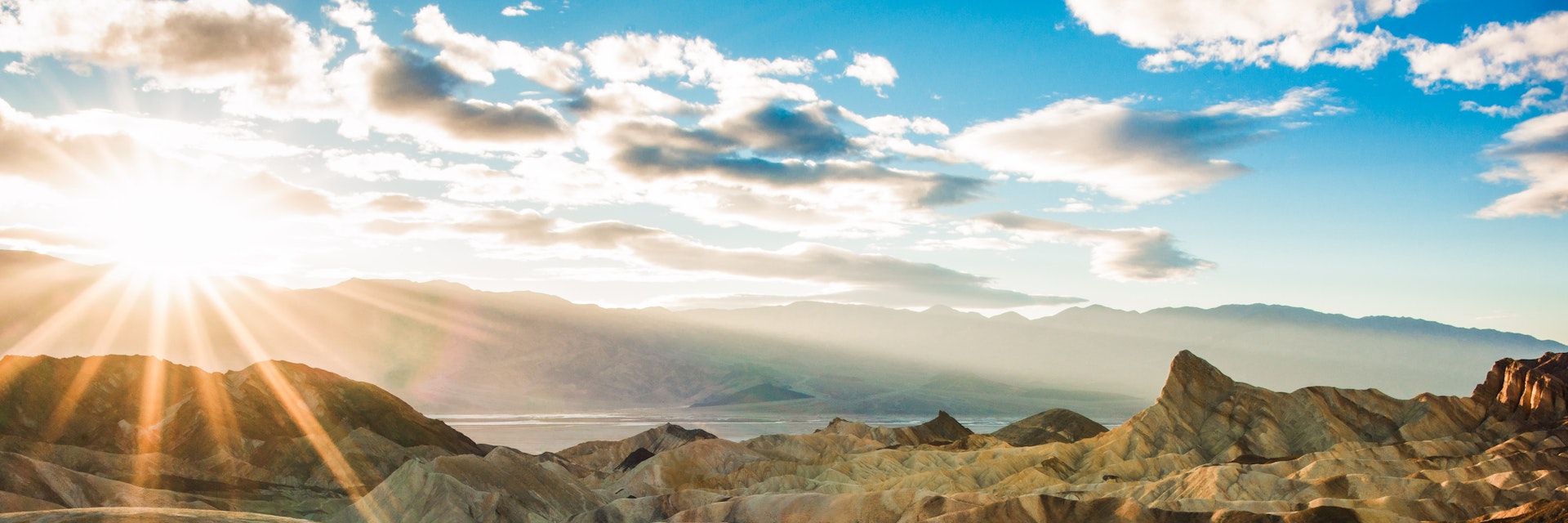Not many national park features can say they were celebrated in a 1969 film of the same name, but Zabriskie Point claims that honor thanks to director Michelangelo Antonio. It's easy to see why the spectacular views in this corner of Death Valley have inspired creatives from Antonio to the cinematographers behind 1960's Spartacus to U2's Joshua Tree album. A flashpoint for 1970s counterculture, even philosopher Michel Foucault rhapsodized about experiencing Zabriskie firsthand.
Here you can see the rumpled badlands unfurl beneath the Panamint Mountains, hinting at when Death Valley wasn't known for its dry heat but was shaped by the flow of ancient creeks and lakes, and later erosion. Keep your eyes pealed for Manly Beacon (named for one of the original 49'ers who came to Death Valley searching for gold), the wedge-shaped outcropping below Zabriskie point that's set off beautifully at sunrise or sunset, when the walls of the canyons here gleam as if from within.
In addition to taking in Death Valley from above at Zabriskie, you can also use it as a launching point for hikes. You can reach Zabriskie point from a short hike from the parking lot, or from further afield on the Golden Canyon, Gower Gulch, and Badlands Loop trails, which can be taken individually or combined into an eight mile round trip trek.
There is parking suitable for cars and RVs at Zabriskie point, along with vault toilets and interpretive exhibits. While the toilet facilities and parking lot are accessible for visitors with disabilities, the grade of the short path to the overlook itself is somewhat steep, and may be a challenge for some of those using mobility aids.
